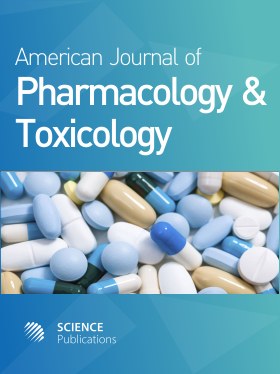Cardioprotective Effect of Cucumis trigonus Roxb on Isoproterenol-Induced Myocardial Infarction in Rat
- 1 Soniya Education Trust’s College of Pharmacy, India
- 2 Karnataka Lingayat Education University, India
- 3 Karnataka Lingayat Education Society’s College of Pharmacy, India
- 4 Karnataka Lingayat Education Society’s College of Engineering and Technology, India
Abstract
Problem statement: Cucumis trigonus Roxb fruit is used for various ailments in Indian traditional system of medicine such as anthelmintic, liver tonic, cardio tonic, appetizer, expectorant and intellect promoting. However, there is lack of information regarding the effect of Cucumis trigonus on the cardiac changes associated with ISO induced myocardial infarction. Approach: The present study was designed to evaluate the cardioprotective potential of ethanol extract of Cucumis Trigonus Roxb fruit (CTE) on the basis of electrocardiographic, biochemical and histopathological parameters in isoproterenol induced myocardial infarction in rats. Male albino sprague dawely rats were pretreated with CTE (75 and 150 mg kg-1) daily for a period of 14 days. After the treatment period, ISO (200 mg kg-1) was subcutaneously injected to rats at an interval of 24 h for two days to induce myocardial injury. After 48 h, rats were anaesthetized with anesthetic ether, electrocardiographic and the levels of biochemical and histological observations of the heart tissues were performed. Results: The activities of serum marker enzymes (ALT, AST, LDH and CPK) were increased significantly (p<0.05) in ISO-induced rats. In addition, it also exhibited Electrocardiographic (ECG) changes such as increase heart rate, reduced R-wave amplitude and ST-segment elevation. CTE at concentration of 150 mg kg-1, when administered orally showed a decrease in serum enzyme levels and the ECG changes brought to the near normal values. The observed results were further confirmed by histopathological findings. The histological sections obtained from ISO alone showed various degrees of focal lesions in many sections, consisting molted staining and fragmentation of muscle fibers with confluent retrogressive lesions were observed. Animals treated with CTE demonstrated marked improvement in ISO-induced alterations such as vacuolar changes, edema, capillary dilatation and leukocyte infiltration compared to ISO administered group. Conclusion: Our data showed that CTE (150 mg kg-1, p.o.) significantly restores most of the electrocardiographic, biochemical and histopathological parameters. The present study concluded that CTE may be therapeutic and prophylactic value in the treatment of myocardial infarction.
DOI: https://doi.org/10.3844/ajptsp.2009.29.37

- 9,810 Views
- 7,303 Downloads
- 67 Citations
Download
Keywords
- Cucumis trigonus roxb
- isoproterenol
- myocardial infarction
- cardioprotective
